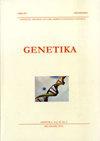CRACK DETECTOR – THE CRACK DETECTION IN THE SNOTTY BUILDING BASED ARTIFICIAL INTELLIGENCE AND IMAGE PROCESSING SMART SOLUTION TO STRUCTURAL COLLAPSE
4区 农林科学
Q3 Agricultural and Biological Sciences
引用次数: 0
Abstract
Crack Detector – The Crack Detection In The Snotty Building Based Artificial Intelligence And Image Processing Smart Solution To Structural Collapse is a device designed by the building's design team by implementing artificial intelligence science and image processing to detect the cracks and dimensions autonomous. Data obtained was sent to the user's computer in real time. The purpose of the construction of the device is to facilitate communities especially construction and construction safety committees (KKK) the building's security system hopes to detect cracks in high rise and can provide data on the level of damage, data obtained from a crack detector among other images and videos from the state of the building, the dimensions of cracks and the positions of cracks. Based on these data can be determined an ordinance of the building structure. Toolmaking begins with observing a multistory building on the campus and a literature study of both national and international journals and books. Next is the tool design using Solidworks 2020. Once the design is finished it continues to the stage of procuring the components needed to make the prototype. The building of the prototype is divided into three stages of assembly of the frame, assembly of the electronic components and program building. Once completed, the tool was tested for performance knowing.裂缝检测器&基于人工智能和图像处理的鼻涕楼裂缝检测结构倒塌智能解决方案
裂缝探测器-基于人工智能和图像处理的结构坍塌智能解决方案的Snotty建筑中的裂缝检测是由建筑设计团队通过实施人工智能科学和图像处理来自主检测裂缝和尺寸的设备。所获得的数据被实时发送到用户的计算机。该设备的建造目的是为社区,特别是建筑和施工安全委员会(KKK)提供便利。该建筑的安全系统希望检测高层建筑中的裂缝,并可以提供损坏程度的数据、从裂缝检测器获得的数据以及来自建筑状态的其他图像和视频,裂纹的尺寸和裂纹的位置。根据这些数据可以确定建筑结构的条例。工具制作始于观察校园里的一栋多层建筑,以及对国内外期刊和书籍的文献研究。接下来是使用Solidworks 2020进行的工具设计。一旦设计完成,它就继续进入采购制造原型所需组件的阶段。原型的构建分为框架组装、电子元器件组装和程序构建三个阶段。一旦完成,该工具将进行性能测试。
本文章由计算机程序翻译,如有差异,请以英文原文为准。
求助全文
约1分钟内获得全文
求助全文
来源期刊

Genetika-Belgrade
AGRONOMY-GENETICS & HEREDITY
CiteScore
1.80
自引率
0.00%
发文量
1
审稿时长
6-12 weeks
期刊介绍:
The GENETIKA is dedicated to genetic studies of all organisms including genetics of microorganisms, plant genetics, animal genetics, human genetics, molecular genetics, genomics, functional genomics, plant and animal breeding, population and evolutionary genetics, mutagenesis and genotoxicology and biotechnology.
 求助内容:
求助内容: 应助结果提醒方式:
应助结果提醒方式:


